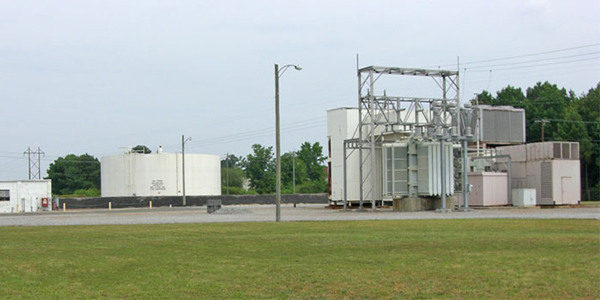By Michael Yoder
While PJM’s controversial initiative to tighten fuel requirements for black start resources is on pause, the RTO said last week it wants to clarify and update its documentation on the substitution and termination of those resources.
PJM’s David Kimmel presented a first read of a proposed problem statement and issue charge at the Operating Committee meeting Thursday, saying PJM officials have identified four areas in the Tariff and manuals in need of updates.
Last month, PJM suspended its initiative looking at black start fuel requirements, which faced opposition from state regulators and consumer advocates. (See PJM Backs off Black Start Fuel Rule.)
Kimmel said while the fuel requirements initiative remains on “hiatus,” the RTO wanted to clean up black start resource language in the Tariff not related to fuel.
“We have received a lot of questions on substitution, and we wanted to make those rules more clear,” Kimmel said.
PJM is first rewriting language for testing requirements for black start resources not compensated through Schedule 6A of the Tariff. Kimmel said PJM has identified the need to provide clarity within testing requirements to ensure consistency, including test submittal timelines, for black start units compensated by either PJM or transmission owners.
Kimmel said the black start units in PJM are typically compensated through Schedule 6A, while some units entered service through a contract with a TO that was integrated into the system. In order to receive compensation, the unit must submit a successful black start test to PJM every 13 months.
The second clarification PJM is seeking is on black start unit substitution rules. Currently the Tariff allows a black start unit owner to substitute another unit as long as it’s on the same voltage level and has a valid annual black start test.
Kimmel said PJM has received increased questions on adding, maintaining and managing units as black start substitutes. He said some of the questions that have been raised include the notification time required to allow a substitution and how to manage updates to system restoration plans documenting black start resources.
Black start termination rules are also being addressed, Kimmel said, to address potential delays in planning and replacement.
PJM and black start unit owners are currently required to provide a one-year advance notice of intent to terminate service. Kimmel said that could allow a unit to remain in the system without a successful test on file for an extended period of time before being terminated, delaying PJM from procuring a replacement.
The RTO also is looking to update the black start capital recovery factor (CRF) table in the Tariff to reflect current tax law and interest rates. It also is exploring a new process for automatically updating and documenting the table to remain current.
Kimmel said black start units electing to recover new or additional capital costs must commit to provide black start service for a term based on the age of the unit, and the CRF table lists the term periods of commitment and applicable capital cost recovery factors. He said recent tax law and interest rate changes don’t reflect the assumptions used in the current CRF and need to be updated.
Work on the proposed changes is expected to take two to three months, Kimmel said, and it could be another six months before the changes would take effect in the Tariff. Changes are also anticipated to Manuals 10, 12 and 14D.
Process Questions
Independent Market Monitor Joe Bowring said he agreed with PJM’s proposal that the CFR table needs to be modified for tax law changes. He recommended that a reference interest rate be used as part of the problem statement and issue charge for the new changes and that the Moody’s Utility Index for bonds already in use in the Tariff for black start-related matters be the benchmark.
Bowring also said he would also like to see the black start minimum tank suction level (MTSL) issue addressed in the new changes. He said the MTSL has been an issue for several years that has not been clearly addressed. PJM had agreed with the Monitor’s position and had included such an agreement in the black start fuel requirement initiative that is now on hiatus, he noted. (See “Black Start Fuel Assurance,” PJM Operating Committee Briefs: May 1, 2018.)
PJM’s Tom Hauske said the MTSL is still part of an active stakeholder process with the fuel resource initiative and should remain there.
“We’re not sure that you can pull something from one stakeholder process and then bring it over into a whole other stakeholder process,” Hauske said.
Bowring said he didn’t see why the MTSL issue couldn’t be addressed in the new process, as the fuel cost committee is currently on hiatus. Bowring also pointed out that the CRF table was part of the fuel assurance matrix being discussed in the black start fuel requirement.
Hauske said the previous fuel assurance matrix discussion dealt only for new units that were going to provide fuel assurance and did not apply to current units that were switching to black start, which is what the new proposed changes are meant to answer.




